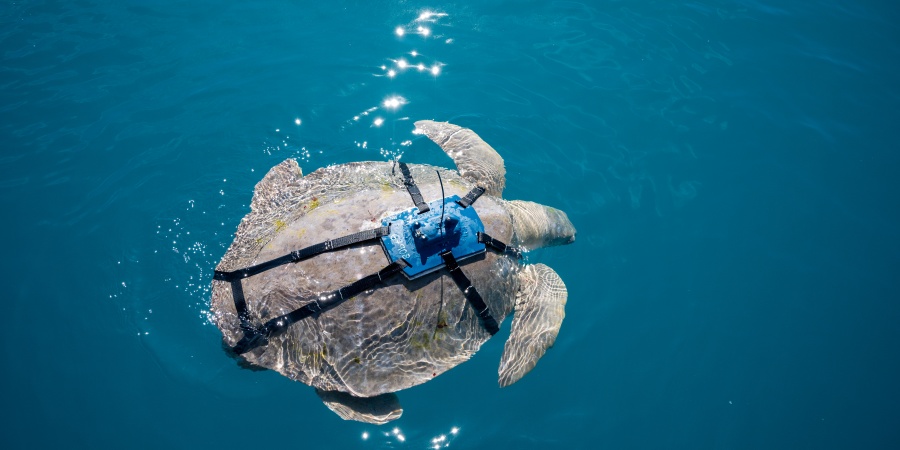
Scientists studying flatback turtles in Western Australia have collaborated to create one of the biggest satellite tracking datasets for a marine species in the world.
Flatback turtles migrate hundreds of kilometres between nesting beaches and foraging grounds, with females laying their eggs exclusively in Australian sands.
The study “I still call Australia home: satellite telemetry informs the protection of flatback turtles in Western Australian waters” is a collaboration between the Department of Biodiversity, Conservation and Attractions (DBCA), Pendoley Environmental, Australian Institute of Marine Science, Biomaths Consulting, Rio Tinto and Conservation Volunteers Australia. It was recently published in the journal Ecosphere.
As an affiliate for DBCA’s North West Shelf Flatback Turtle Conservation Program, lead author Dr Lauren Peel from Pendoley Environmental said the study enabled scientists to determine where significant flatback nesting, migration and foraging areas are located and which of these areas are already protected by marine reserves.
“By analysing satellite tracking data collected over 15 years from 280 flatback turtles across the Pilbara and Kimberley regions, we identified that these animals spent 99.5 per cent of their time in Australian waters,” Dr Peel said.
“Unlike other turtle species, flatbacks are our true Aussie turtles, only nesting on our beaches.”
Two key areas of importance for flatback turtles were highlighted in the study at both Barrow Island and Roebuck Bay, as well as along a migratory corridor that connects the coastlines of the Pilbara and the Kimberley.
Using this dataset, managers can consider regulating vessel speeds, minimising the presence and impact of artificial light, and assessing proposed developments with the understanding of the seasonal impacts that associated threats may have on flatback turtles and other marine megafauna such as humpback whales and whale sharks, that use this migratory corridor.
DBCA senior research scientist, Dr Sabrina Fossette-Halot said large collaborative studies such as this one are important for directing future conservation management of wide-ranging marine megafauna, in difficult to access locations.
“The collaboration and contributions of Traditional Owners in the land and sea Country where the flatback turtles live was essential for this study’s success,” Dr Fossette-Halot said.
“Due to the challenges of observing migratory marine species across such remote and vast areas, it took over a decade of collecting satellite tracking data from hundreds of flatbacks to finally shine light on the critical habitats used by the species.
“This study has equipped us with the data to provide key advice regarding where future management efforts should be focused for the species."